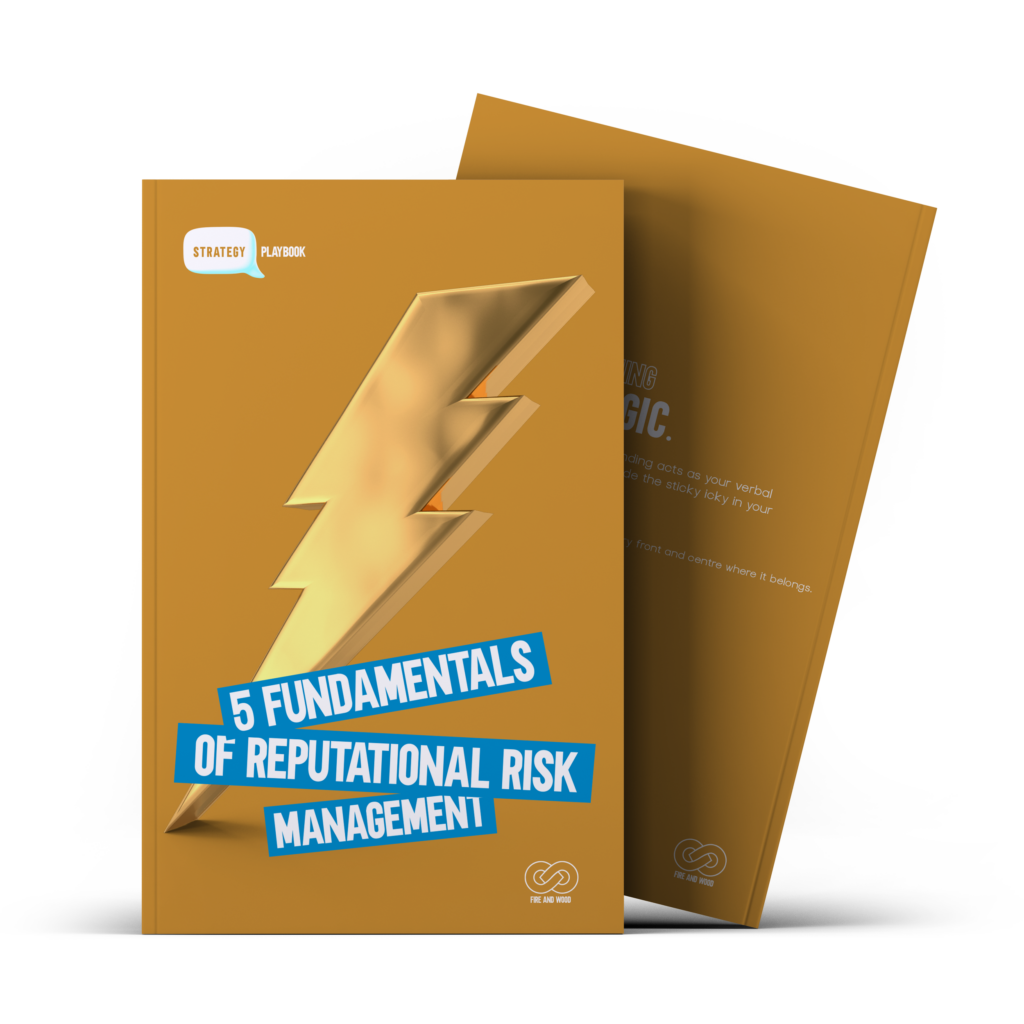Strategy
DISCOVER HOW TO
TRANSFORM YOUR REPUTATIONAL RISK PLAN
Starting-up a start-up from the eyes of starter-uppers.

Todd O'Keefe
Chief Content Officer
Table of Contents
Brand Protection When You’re Most Vulnerable
When you hear about reputational risk, do you picture celebrities, companies with a strong logo, or industries with a bad rap because of problems?
Reputation is perception.
It’s how others feel about your company, product or service and whether that feeling makes them want to purchase from you. Or, how it makes them want to jump on social media and complain.
Gone are the days when you could just refund a customer’s money or replace their item if they were unhappy.
With a simple click from the palm of their hand, unhappy customers share their frustration with others across social media channels and cause issues for brands.
A recent report from Review 42 indicates that 60 per cent of consumers say that negative reviews turned them away from using a business. This fact alone is why companies need to play the long game and establish a bulletproof brand presence to closely protect their reputation.
By taking the long view and getting digital, brands can guide their immediate communication through the lens of proactive brand filters for saying and doing the right thing with timely messaging.
This blog discusses protecting your brand and breaks down the fundamentals of reputation risk management from several angles.
And, it walks you through examples of ways to predict, prepare and proceed with confidence when faced with a reputation risk issue or crisis at your job.
Reputation risk management fundamentals
The nature of reputation is an outcome that results from collective decisions, actions and behaviours of brands.
A brand’s reputation is typically judged or perceived by its three core elements: competence, transparency and stewardship.
It can be challenging to address reputational risk without diving into many factors, such as brand ownership, low awareness of risks to financial viability and even a failure to consider external perspectives.
It makes sense to approach reputation risk management with an outside-in lens for a cohesive view to identify perspectives that impact reputation.
This considers the various stakeholders of a brand, such as varying levels of government, the general public, customers and clients, natural comparators and your community at large.
How you interact with a broad and diverse group, each with individual agendas and levels of influence, has a negative or positive impact on managing reputation risk.
Mapping key stakeholder relationships across touchpoints is critical for controlling potential damage, controlling response times and general control of the narrative.
Brands can identify blind spots by getting out in front of potential risks that normally lead to issues or crisis management.
Forecasting with accuracy
It makes sense to prepare for future trends and proactively anticipate reactions to flip the script from risk to opportunity.
A brand can build its reputational resilience to prepare for unexpected threats and crises by opening up opportunities for dialogues on strategies for adapting, protecting or improving on current reputation risk plans. These acts are a game-changer for how a brand responds and recovers from reputational risk factors.
Prepared brands are ready for any internal or external risks well before it even hints at a potential crisis threat.
Be that brand.
Get ready now with a risk mindset and arm your team with an incident response plan.
After all, you will be remembered for how you managed the reputational risk even more so than the actual risk itself. And your actions during and after are essential for building reputation resilience.
Looking for more ways to navigate reputational risk management?
Grab your playbook for insights into why reputation is important and how to predict, prepare and prevent risks to your brand.
Gain more confidence when handling brand crises and fixing risk plan vulnerabilities.
GET THE GOODS
Our starter-upper blog is a place you’ll find creative trade secrets, shop talk and the trials and errors of a creative incubator.
Our goal is to make things people will enjoy and want to share—from storytelling and copyhacking best practices to articles, videos and white papers.
Join the Starter-Upper newsletter today and get more articles like these ones.

PROTECT
YOUR BRAND
REPUTATION
Take a deep dive into your
free copy of the 5 Fundamentals of Reputational Risk Management and start building a bulletproof brand reputation that stands the test of time.
GET THE STARTER-UPPER INSIGHTS

